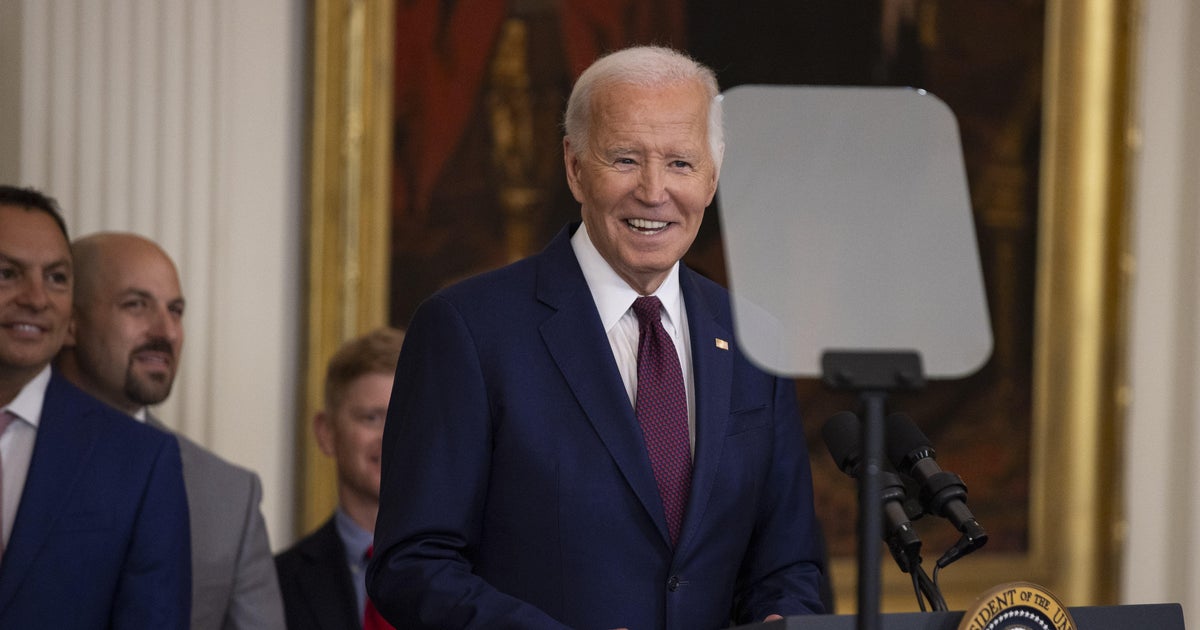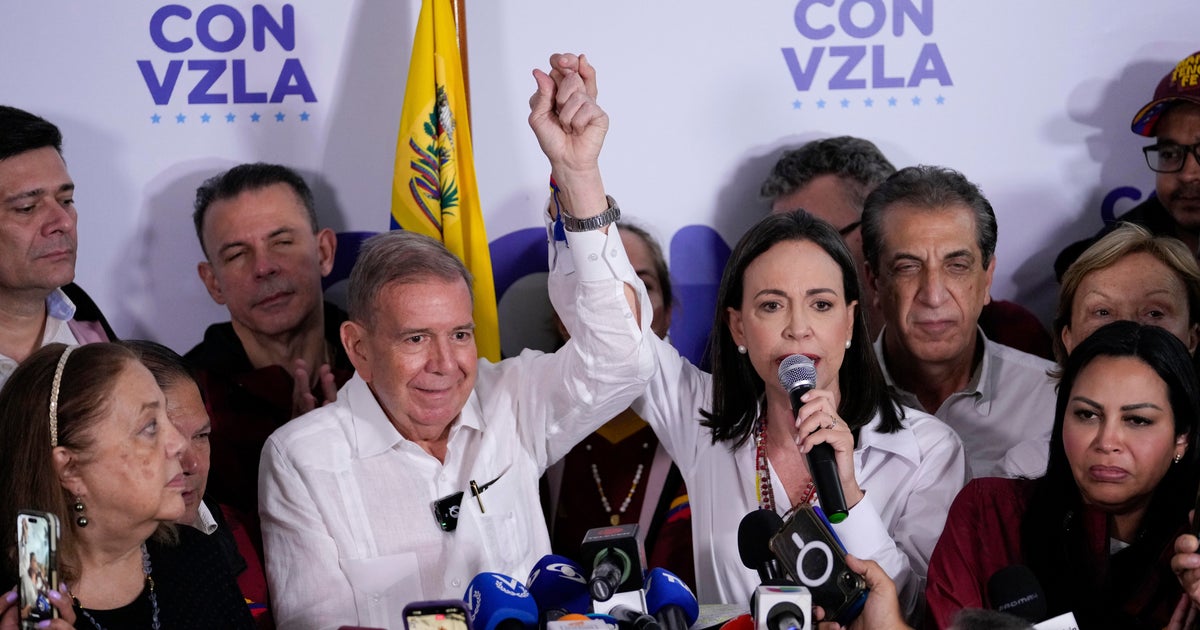CBS News
Bidens to tout Cancer Moonshot initiative in New Orleans

New Orleans, Louisiana —President Biden and first lady Jill Biden are traveling to New Orleans Tuesday to tout the Biden Cancer Moonshot initiative, a week after the Department of Health and Human Services awarded nearly $9 million to improve access to cancer screenings and follow-up treatments in underserved communities – part of the initiative’s effort to expand preventive cancer care.
Two years ago, the Biden administration relaunched the Cancer Moonshot initiative with two main goals — to prevent 4 million cancer deaths by 2047 and to improve the experience of people affected by cancer.
Since then, the initiative has announced collaborations with the private sector, among them an effort involving the country’s largest health insurers, who have committed to expand access to services to help patients and their families in the U.S. navigate cancer treatments or screenings and $100 million for cancer prevention and treatment in Africa.
But the upcoming election may affect future cancer research funding for the Cancer Moonshot. The program began under the Obama administration in 2016, and it continued to receive funding during the Trump administration, too. Mr. Biden also initiated a private-sector phase that he paused in 2019 when he launched his bid for the presidency. Funding for the Cancer Moonshot initiative decreased during the pandemic in 2020.
“With every election, there’s a concern that funding will be cut. And over the past few years with the budget standoffs, that has significantly infected funding for cancer research,” said Dr. Stefan Grant, director of the Tulane Cancer Center.
Cancer is the second-leading cause of death in the United States, with approximately 600,000 deaths annually, according to the Health and Human Services Department. A new cancer study found that male cancer cases are expected to rise by 53% globally from 2022 to 2050. The president often speaks about how his own life has been affected by cancer after his son Beau Biden died from brain cancer in 2015 at the age of 46.
One focus of the initiative is increasing engagement in cancer prevention by urging Americans to get cancer screenings that they missed during the pandemic. One study funded by the Cancer Moonshot is researching cancer detection blood tests as a less invasive tool for early detection of cancer. It also works to increase community engagement in order to address disparities in cancer treatment.
“If you have great treatment, it doesn’t mean anything if you can’t get it to the patients,” says Dr. Joe Ramos, Director and CEO at the Louisiana Cancer Research Center, who will join the president at the New Orleans event. He says the Cancer Moonshot initiative works to re-frame the conversation around cancer to be more patient-centered.
Grant says the Louisiana area that he serves sees a number of cancers caused by factors that are preventable – smoking, obesity, and inactivity. His team is working on community outreach to modify those risks and advocate for more cancer screenings. Cancers identified early are often more treatable.
“Within Louisiana, it’s historically been difficult to access care,” says Grant. “We are trying to make entry into and flow through the healthcare system as painless as possible. The healthcare system is a terrifying place for people who haven’t lived in it.”
But funding specifically allocated for the Cancer Moonshot was not renewed in the March congressional spending bill, leading to concerns about funding in the future.
Ramos says this is a bipartisan issue that needs congressional funding.
When asked if the Trump campaign would advocate continued funding for the Biden Cancer Moonshot initiative Karoline Leavitt, Trump’s national press secretary responded, “serious question: what policies has he implemented? And what have they done?”
“America leads the world in cancer research, and it does that because the government has been such a great funder of research,” Grant said. “We really don’t want to lose that edge.”
Jake Rosen and Aaron Navarro contributed to this report.
and
contributed to this report.
CBS News
Here Comes the Sun: Jack Antonoff and more

Watch CBS News
Be the first to know
Get browser notifications for breaking news, live events, and exclusive reporting.
CBS News
Capturing Moriah Wilson’s Killer – CBS News

Watch CBS News
Be the first to know
Get browser notifications for breaking news, live events, and exclusive reporting.
CBS News
How to watch the Minnesota Vikings vs. Chicago Bears NFL game today: Livestream options, more

Getty Images
The Minnesota Vikings will take on the Chicago Bears today. The Vikings are currently 8-2, an impressive run so far this season, and will be looking to add a fourth win to their current streak after last Sunday’s 23-13 win against the Tennessee Titans. The Bears, on the other hand, are entering this game on the heels of a four-game losing streak after a tough 20-19 loss against the Green Bay Packers last Sunday.
Here’s how and when you can watch the Vikings vs. Bears game today, whether or not you have cable.
How and when to watch the Minnesota Vikings vs. Chicago Bears
The Vikings vs. Bears game will be played on Sunday, November 24, 2024 at 1:00 p.m. ET (11:00 a.m. PT). The game will air on Fox and stream on Fubo and the platforms featured below.
How and when to watch the Minnesota Vikings vs. Chicago Bears game without cable
You can watch this week’s NFL game on Fox via several streaming services. All you need is an internet connection and one of the top options outlined below.
Fubo offers you an easy, user-friendly way to watch NFL games on CBS, Fox, NBC, ABC, ESPN, and NFL Network, plus NCAA football channels. The Pro tier includes 200+ channels and unlimited DVR, while the Elite with Sports Plus tier adds NFL RedZone and 4K resolution. New subscribers get a seven-day free trial and all plans allow streaming on up to 10 screens simultaneously.
You can watch today’s game with a subscription to Sling’s Orange + Blue tier, which includes ESPN, ABC, NBC, and Fox. The plan offers 46 channels with local NFL games, nationally broadcast games and 50 hours of DVR storage. For complete NFL coverage, add Paramount+ to get CBS games, or upgrade with the Sports Extra add-on for additional sports channels like Golf Channel, NBA TV and NFL RedZone.
Watching NFL games, including Fox broadcasts, is simple with Hulu + Live TV, which includes 90 channels, unlimited DVR storage, and access to NFL preseason games, live regular season games and studio shows. The service includes ESPN+ and Disney+ in the subscription.
Want to watch today’s game live on your smartphone? If so, NFL+ streaming service is the solution you’re looking for. It lets you watch NFL Network and out-of-market games on mobile devices, with an upgrade option to NFL+ Premium that includes NFL RedZone for watching up to eight games simultaneously. Note that NFL+ only works on phones and tablets, not TVs.








